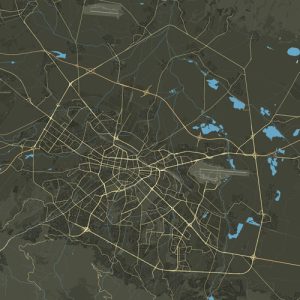20 km north of the town of Veliko Tarnovo and 3.5 km south of the village of Nikyup, Veliko Tarnovo is Nikopolis ad Istrum – the best-studied and best-preserved Roman city not only in Bulgaria, but also within the borders of the European provinces of the Roman Empire. empire. Nikopolis ad Istrum has the characteristics of urban planning and was built according to the requirements of ancient architecture, but there are also traces characteristic of Thracian culture, which make it unique in meaning.
The archaeological reserve presents the remarkable layers of historical memory of antiquity in Europe – from the era of the Roman imperial civilization at the beginning of the II century to the end of Late Antiquity (VI-beginning of the VII century), through the Romanization of the Greek world and the Gothic presence in the Balkans to the early Byzantine urban culture.
Archaeological excavations have been taking place in Nicopolis ad Istrum for more than 110 years. For the first time, the French epigrapher Georges Seur, a representative of the French School in Athens, worked here in 1900, at the personal invitation and with the financial support of Prince Ferdinand. In 1906, research was done by the Czech scientist Vaclav Dobruski. Excavations and architectural reconstructions of the plans based on uncovered foundations were carried out by numerous Bulgarian scientists in the 20s and 30s of the last century, in 1946-47 and 1966-2018.
In its heyday, Nicopolis ad Istrum was the most significant urban center in the interior of the province of Lower Moesia. It is not by chance that the city has been compared to the two cities emblematic of Roman culture in Europe – Pompeii and Herculaneum.
The “City of Victory” was founded around 106-110 by Emperor Trajan in honor of his victories over the Dacians. Its appearance was shaped in the 2nd century by Greek masters, immigrants from Nicaea, Nicomedia and other Eastern Roman cities. The constructions at Nicopolis ad Istrum are contemporary with today’s famous ruins at Ephesus, Smyrna, Leptis Magna and Baalbek.
In the early years of the existence of Nicopolis, the territory of the city belonged to the province of Thrace, and from the end of the 2nd century, during the reign of Septimius Severus (193-211), the city became the economic and cultural center of the province of Lower Mysia. At that time, the forum (the central city square), decorated with colonnades and statues, the most important public buildings – boulevard (city council), odeon (small music theater), civic basilica , temples, baths and other public and private buildings were already built.
The city was fortified with fortress walls equipped with gates and towers, the streets were paved with stone slabs, and complex water and sewage systems were installed.
Nikopolis mints its own coins – some of them depict buildings unique in layout and architectural appearance that existed in the city.
In 347, the Byzantine Emperor Constantius II allowed the Christianized community of Goths, led by Bishop Wulfila, to settle in the area around Nicopolis. It was here that Wulfila translated the Bible into Gothic, and Nicopolis ad Istrum turned out to be the most likely birthplace of the first written monument of German literature.
Archaeological information about the necropolis – “City of the Dead” in Nikopolis ad Istrum has been accumulated for more than two centuries. Some of the tombstones and burial facilities find parallels in North Africa and are not typical of the European Roman provinces. Today, they outline the approach to the Roman city, attract and intrigue tourists even before entering the forum and immerse them in the atmosphere of antiquity.
Work time:
April – September: 9:00 – 17:00
October – November: 9:00 – 16:00
December – March: By prior request for organized groups (from the previous day) on tel. 0885 144 304.
Entrance tickets:
Reduced ticket – for students – BGN 2.
For a family (up to three children) – BGN 6.
Regular ticket – for all other visitors – BGN 6.
Lectures:
In Bulgarian – BGN 10 per hour.
With translation – BGN 20 per hour.
In a foreign language – BGN 30 per hour.
VISITS are free every last Thursday of the month.
Access:
Access from the main road E85 Veliko Tarnovo – Ruse – 2.8 km.
Access from the road Veliko Tarnovo – Samovodene – Resen – Nikyup – 26
Possibility of visiting by people in a disadvantaged position
Accessible for the disabled, electric car and decking lanes are used Sanitary facilities for the disabled
Contacts:
Contact information:
5000 Veliko Tarnovo St. “Nicola Piccolo” #6062 682 511

